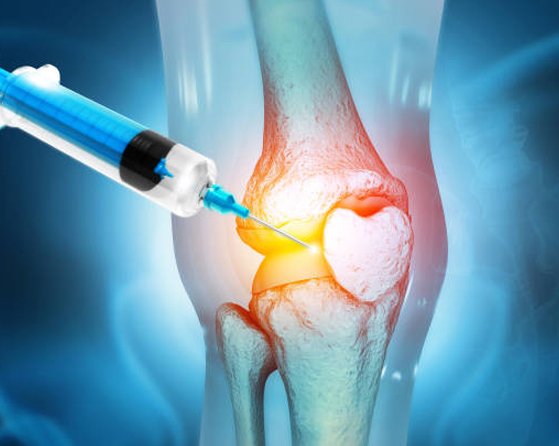Introduction
Pain on the inside of the knee is a common concern that can arise from various sources. This discomfort can significantly impact mobility and quality of life. In this blog, we will delve into the causes of pain on the inside of the knee, explore the associated symptoms and structures involved, discuss the essential investigations, and highlight the regenerative treatments available for lasting relief.
Causes of Pain on the Inside of the Knee
- Medial Meniscus Tear : A tear in the medial meniscus, the C-shaped cartilage cushion within the knee joint, can cause pain on the inner side of the knee. Twisting motions or direct trauma can lead to such tears.
- Medial Collateral Ligament (MCL) Injury : An MCL sprain or tear can result from sudden twisting or direct impact to the outer knee. Pain may be felt along the inner aspect of the knee joint.
- Osteoarthritis : Degeneration of the knee joint’s cartilage, known as osteoarthritis, can cause pain and discomfort, often concentrated on the inner knee.
- Pes Anserine Bursitis : Inflammation of the pes anserine bursa, located near the inner side of the knee, can lead to localized pain. This condition is commonly linked to overuse or tight muscles.
Symptoms and Painful Structures
Pain on the inside of the knee may be accompanied by:
- Swelling
- Stiffness
- Limited range of motion
- A clicking or locking sensation
The painful structures involved include:
- Medial meniscus
- Medial collateral ligament
- Pes anserine bursa
- Joint surfaces affected by osteoarthritis
Investigations to Identify the Cause
Physical Examination : A thorough assessment by a healthcare professional involves evaluating knee stability, range of motion, and areas of tenderness.
Imaging Studies : X-rays, MRI scans, or ultrasound may be used to visualize the knee’s internal structures and identify any damage or inflammation.
Regenerative Treatments for Lasting Relief
Platelet-Rich Plasma (PRP) Therapy : PRP involves injecting a concentrated solution of the patient\’s own platelets into the affected area. PRP promotes tissue healing and reduces inflammation, offering potential relief for conditions like meniscus tears and osteoarthritis.
Stem Cell Therapy : Stem cells have the ability to differentiate into various cell types, aiding in tissue repair. Research suggests that stem cell injections may contribute to the regeneration of damaged knee structures.
Prolotherapy : This technique involves injecting a solution into the damaged or inflamed area to stimulate the body\’s natural healing response. Prolotherapy can target conditions such as ligament injuries and osteoarthritis.
Conclusion
Pain on the inside of the knee can originate from multiple sources, affecting different structures within the joint. Identifying the underlying cause is crucial for effective treatment. From meniscus tears and ligament injuries to osteoarthritis and bursitis, regenerative treatments like PRP therapy, stem cell therapy, and prolotherapy offer promising avenues for lasting relief. Consulting a healthcare professional will ensure accurate diagnosis and a tailored treatment plan for your specific condition.If you are considering regenerative treatments for any of these conditions, do consider meeting OUR EXPERTS In Regenerative Medicine at ALLEVIATE PAIN CLINIC, Bengaluru. You can contact us on :- 9008275170 / 9620244761 / 8494973146
References
- Mayo Clinic. Meniscus Tear. https://www.mayoclinic.org/diseases-conditions/meniscus-tears/symptoms-causes/syc-20350568
- American Academy of Orthopaedic Surgeons. Medial Collateral Ligament Injuries. https://orthoinfo.aaos.org/en/diseases–conditions/medial-collateral-ligament-injuries
- Arthritis Foundation. Osteoarthritis of the Knee. https://www.arthritis.org/diseases/osteoarthritis-of-the-knee
- Cleveland Clinic. Pes Anserine Bursitis. https://my.clevelandclinic.org/health/diseases/17798-pes-anserine-bursitis
- Filardo G, et al. Platelet-rich plasma intra-articular knee injections show no superiority versus viscosupplementation: a randomized controlled trial. Am J Sports Med. 2015;43(7):1575-82.
- Emadedin M, et al. Long-Term Follow-up of Intra-articular Injection of Autologous Mesenchymal Stem Cells in Patients with Knee, Ankle, or Hip Osteoarthritis. Arch Iran Med. 2015;18(6):336-44.
- Scarpone M, et al. Prolotherapy: a literature review and retrospective study. J Neuro Rehab. 2008;21:33-44.



